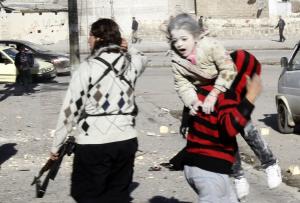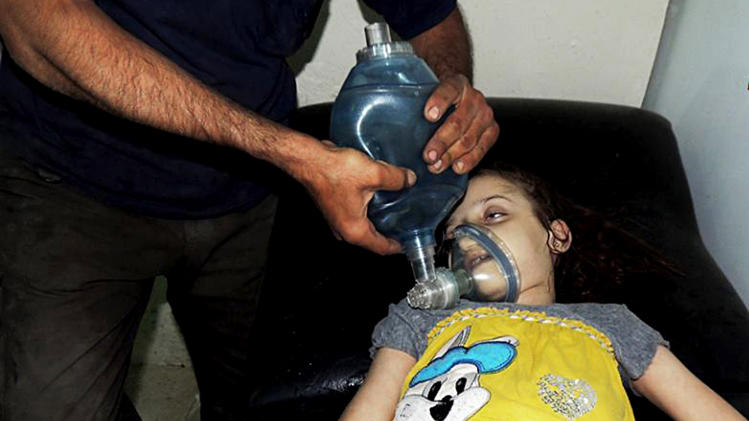In early September, Secretary of State John Kerry said the United States had proof that the nerve-gas attack was made on Assad's orders. "We know the Assad regime was responsible," President Obama told the nation in an address days after this revelation, which he said pushed him over the "red line" in considering military intervention.
But in a long story published Sunday for the London Review of Books, Hersh — best known for his exposés on the cover-ups of the My Lai Massacre and of Abu Ghraib – said the administration "cherry-picked intelligence," citing conversations with intelligence and military officials.
A former senior intelligence official told me that the Obama administration had altered the available information – in terms of its timing and sequence – to enable the president and his advisers to make intelligence retrieved days after the attack look as if it had been picked up and analysed in real time, as the attack was happening. The distortion, he said, reminded him of the 1964 Gulf of Tonkin incident, when the Johnson administration reversed the sequence of National Security Agency intercepts to justify one of the early bombings of North Vietnam. The same official said there was immense frustration inside the military and intelligence bureaucracy: ‘The guys are throwing their hands in the air and saying, “How can we help this guy” – Obama – “when he and his cronies in the White House make up the intelligence as they go along?”’
Here's what Hersh alleges:
The administration buried intelligence on the fundamentalist group/rebel group al-Nusra. It was seen, Hersh says, as an alarming threat by May, with the U.S. being aware of al-Nusra member able to make and use sarin, and yet the group – associated with the rebel opposition in Syria – was never considered a suspect in the sarin attacks. Hersh refers to a top-secret June cable sent to the deputy director of the Defense Intelligence Agency that said al-Nusra could acquire and use sarin. But the Office of the Director of National Intelligence and the Office of the Defense Intelligence Agency could not find the document in question, even when given its specific codes.
View gallery

A Syrian refugee and his son walk by winter kit aid boxes after receiving their share of blankets an …
Samantha Power, the U.S. ambassador to the UN, told a press conference: ‘It’s very important to note that only the [Assad] regime possesses sarin, and we have no evidence that the opposition possesses sarin.’
It is not known whether the highly classified reporting on al-Nusra was made available to Power’s office, but her comment was a reflection of the attitude that swept through the administration.
The administration was learning about the attack at roughly the same speed civilians were. Hersh says the thorough daily intelligence briefings in the days surrounding the gas attack did not make a single mention of Syria, even as videos and photos of the attack went viral across the Internet. He added that there was revealed a sensor system in Syria that had, in December 2012, shown sarin production at a chemical weapons depot arranged by the Syrian army. Though it was unclear whether this was a simulation or not – all militaries, Hersh says, practice simulations of such things – Obama promptly warned Syria that use of sarin gas would be "unacceptable."
‘If what the sensors saw last December was so important that the president had to call and say, “Knock it off,” why didn’t the president issue the same warning three days before the gas attack in August?’
View gallery

A man carries a wounded girl who survived what activists say was an air strike by forces loyal to Sy …
The media succumbed to confirmation bias in response to a UN report on the attack. That report, which is less than certain in its terms, said that the spent weapon "indicatively matches" the specifics of a 330mm calibre artillery rocket. MIT professor Theodore Postol and other munitions experts later reviewed the photos and said that it was improvised, likely made locally, didn't match anything in the Syrian arsenal and would not have been able to travel the nine kilometres from the Syrian army base that the media presumed it was fired from.
Postol and a colleague, Richard M. Lloyd, published an analysis two weeks after 21 August in which they correctly assessed that the rockets involved carried a far greater payload of sarin than previously estimated. The Times reported on that analysis at length, describing Postol and Lloyd as ‘leading weapons experts’. The pair’s later study about the rockets’ flight paths and range, which contradicted previous Times reporting, was emailed to the newspaper last week; it has so far gone unreported.
Though a UN resolution nullified the chances of American military intervention, the impact would be significant if the allegations hold up; recall that President George W. Bush's legacy was deeply tainted by charges that the U.S. had no proof of nuclear weapons in Iraq when they said they did. Hersh hints at the seriousness of the charges himself: "The cherry-picking was similar to the process used to justify the Iraq war."











